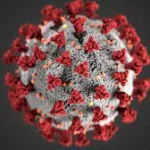A new study published in the British Journal of Sports Medicine has revealed compelling evidence that even modest levels of physical activity before a cancer diagnosis can significantly reduce the risk of disease progression and improve survival rates. While strong evidence has long linked physical activity to reduced cancer-related mortality, its effects on the progression of the disease have been less clear. However, the study’s findings suggest that engaging in regular exercise before being diagnosed with cancer can provide substantial benefits.
The research, conducted in collaboration with South Africa’s largest open medical plan, the Discovery Health Medical Scheme (DHMS), examined anonymized data from 28,248 individuals who participated in the Vitality health promotion program. This program encourages members to stay active through incentives, rewarding participants for engaging in physical activities such as gym visits and fitness events. The study tracked physical activity levels in the year preceding diagnosis for individuals diagnosed with stage 1 cancers, with breast and prostate cancers being the most common.
The data spanned from 2007 to 2022 and showed that nearly two-thirds (65.5%) of participants experienced no cancer progression during the study, while 34.5% did. The time from diagnosis to progression or death ranged from one month to nearly 13 years, with an average survival time of 20 months and an average time to disease progression of 7 months.
Participants were categorized based on their physical activity levels before their diagnosis:
- Inactive (62%): No physical activity recorded
- Low Activity (13%): 60 minutes or less of physical activity per week
- Moderate to High Activity (25%): Over 60 minutes of moderate-intensity exercise per week
The study found that physical activity was linked to a lower likelihood of disease progression and death from any cause. Specifically:
- Those who engaged in low levels of activity (≤60 weekly minutes) had a 16% lower risk of disease progression than those who were inactive.
- Those who engaged in moderate to high levels of activity (≥60 weekly minutes) had a 27% lower risk of progression.
- The odds of death from any cause were 33% lower for those with low activity and 47% lower for those with moderate to high activity compared to inactive participants.
Furthermore, long-term benefits were observed. Two years after diagnosis:
- 74% of inactive participants experienced no disease progression, compared to 78% for those with low activity and 80% for those with moderate to high activity.
- Survival rates were also higher for active participants: 91% for inactive individuals, 94% for those with low activity, and 95% for those with moderate to high activity at two years.
While the findings are promising, the study’s observational nature means it cannot establish a direct cause-and-effect relationship. Researchers caution that factors like smoking, alcohol consumption, and incomplete data on body mass index (BMI) may also play a role. However, they suggest that physical activity likely strengthens the immune system, increasing natural killer cells, lymphocytes, and other immune cells that can help fight cancer.
The study emphasizes that promoting physical activity in individuals diagnosed with cancer could offer substantial benefits in managing and preventing the disease. Physical activity may also help regulate hormone levels, which could be particularly beneficial for hormone-sensitive cancers like breast and prostate cancer.
Disclaimer: This is an observational study and cannot definitively establish cause and effect. The findings should be interpreted with caution, and individuals should consult with healthcare providers before making any changes to their activity levels or treatment plans.












